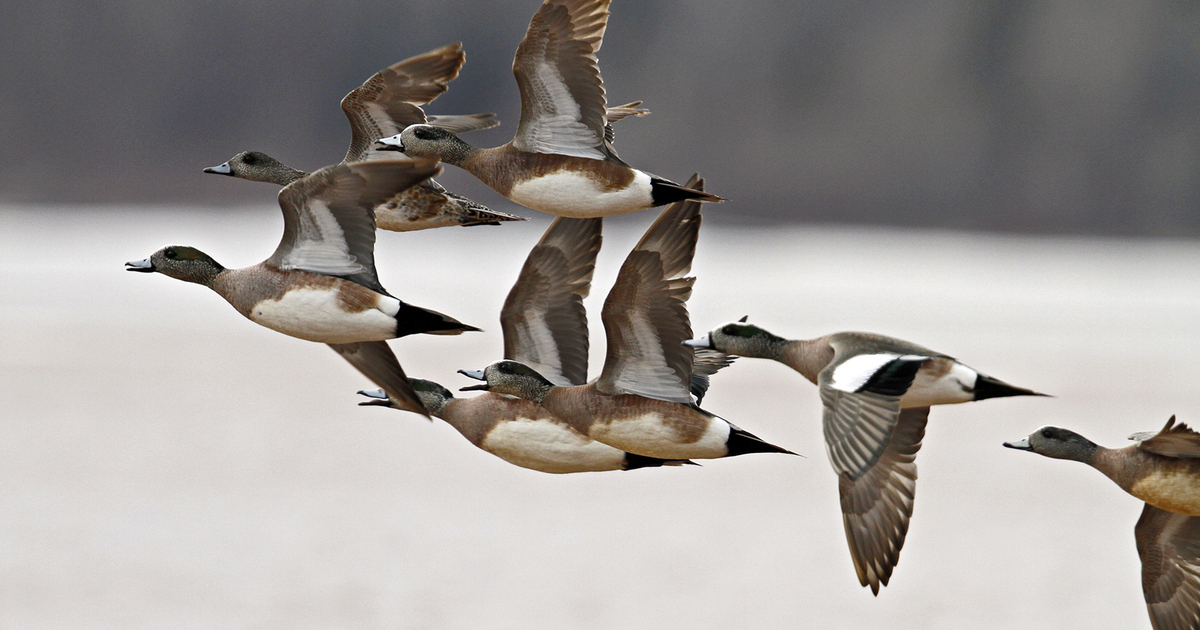Migration Alert: Northwest Hunters Set to Wrap Up Unusual Season
Jan. 26, 2024 – Pacific Flyway – Washington, Oregon, Idaho
Jan. 26, 2024 – Pacific Flyway – Washington, Oregon, Idaho

How has duck and goose hunting been in the Pacific Northwest?
Pick a metaphor—pogo stick, teeter totter, elevator minus the music? In other words, it’s been an up-and-down season.
“Duck hunters are eternal optimists,” says Brandon Reishus, migratory bird coordinator for the Oregon Department of Fish and Wildlife.
But maintaining that optimism has been a bit of a challenge this year with a season that opened with prolonged warm and dry weather, followed by a series of deluges, then more warmth, then ice, and, with one weekend to go, who's going to complain?
Ducks and geese seemed to take forever to abandon familiar haunts in Prairie Canada, and who can blame them. Weather finally got back to near normal by November and then got downright hunter-friendly in January, with modest deep-freezes sending birds into the waiting decoys of hunters who had open water.
The season's most interesting news was two-fold: there was an unexpectedly strong showing of wigeon in Washington and Oregon—and even a bit in Idaho—along with lots of green-winged teal. Mallards finally moved south, barely topping wigeon harvests on several public areas. The other interesting news was that snow geese showed up in some unusual places and were absent in some typical strongholds for the birds.
Meanwhile, the final weekend is predicted to be a bit warm, with birds moving back into usual and accustomed feeding areas. Following is a state-by-state wrap-up.
“It was really slow early on,” says Matt Wilson, statewide waterfowl specialist for the Washington Department of Fish and Wildlife. “A combination of weather was the main driver—the Peace River Valley in Alberta didn't even freeze up until the middle of the season.”
When the cold hit, though, eastern Washington hunters who had open water found much better reasons to leave football games, Wilson said.
In the west, north Puget Sound hunters initially had fair luck in tidal areas, and when more ducks finally arrived, heavy rainfall flooded fields and spread the migrants out across the landscape.
A plus was a successful brant hunt on the north sound, which contrasted with the unusual distribution of snow geese.
As in other parts of the Northwest, an oddly warm fall slowed things down, but it was followed by “a pretty good November, if you had water,” Reishus explains.
Then November hit with tons of rain, which spread the birds out.
“Overall, I'd say it's been a little slower than average, but that wasn't unexpected,” he says. “Breeding numbers were down, and it was dry in Alberta.”
Reishus agrees about the influx of wigeon. “It certainly has been a little bit out of the norm,” he says.
How about Idaho? “It was below average,” notes Jeff Knetter, upland game and migratory bird coordinator for the Idaho Department of Fish and Game.
Like other areas, Idaho hunters waited with bated breath for ducks and geese to arrive, but mild weather delayed the migration.
“There was a late movement of waterfowl into the state,” Knetter explains, but good hunting was spotty. “We had pockets of opportunity, especially on open water in eastern Idaho when the freeze hit.”
Stay up to date with the latest migration information.